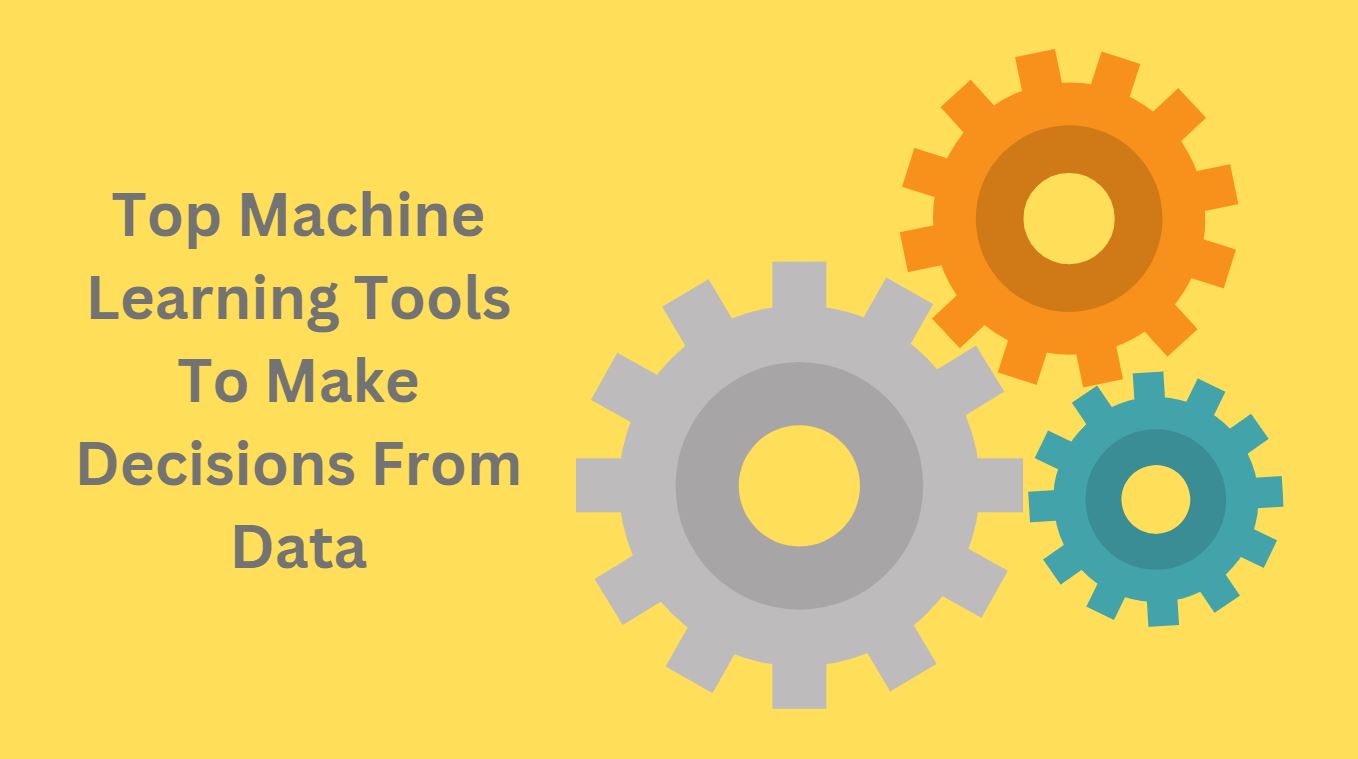- Likes
- Followers
- Followers
- Followers
- Subscribers
- Followers
- Members
- Followers
- Members
- Subscribers
- Subscribers
- Posts
- Comments
- Members
- Subscribe
Top Machine Learning Tools To Make Decisions From Data

If you are data science and machine learning professionals and looking for the top machine learning tools then you are at the right place, I’ll help you to explore these machine learning tools in this article. Machine learning, a link between Data Science and Artificial Intelligence, enables computers to learn and make decisions from data. It has revolutionized industries across the globe. Behind every successful machine learning project lies a set of powerful tools that facilitate data manipulation, model creation, and insights extraction.
Earlier to this article, I’ve given examples of Data Science tools and how data science is different from Machine Learning. Also, you can refer the article on how Python language is helpful in data science and machine learning.
In this article, we embark on a journey through the realm of machine learning tools, exploring their functionalities and their role in shaping the future.
1. Scikit-Learn – The Versatile Workhorse
Scikit-Learn is an open source machine learning library designed on top of Python code that offers a range of algorithms for classification, regression, clustering, and more. Its user-friendly interface and consistent API design make it a favorite among practitioners. Whether you’re a seasoned data scientist or a newcomer, Scikit-Learn provides the tools to explore the world of machine learning.
2. TensorFlow – Empowering Deep Learning
TensorFlow, developed by Google, is a powerhouse for deep learning. Its flexible architecture allows the creation of complex neural networks for tasks like image recognition and natural language processing. TensorFlow’s popularity stems from its community, abundant resources, and support for production deployment.
3. PyTorch – A Deep Learning Pioneer
PyTorch, known for its dynamic computation graph, is favored by researchers for its ease of use and flexibility. Its intuitive interface enables users to build complex models with ease. PyTorch’s strong focus on research makes it a driving force in advancing the field of deep learning.
4. Keras – The Beginner’s Gateway to Deep Learning
Posts You May Like
Keras, often used in conjunction with TensorFlow, simplifies the process of creating deep learning models. Its high-level API abstracts complexities, making it an excellent choice for those new to neural networks. Keras’ user-friendly design accelerates experimentation and model prototyping.
5. XGBoost – Boosting Performance with Gradient Boosting
XGBoost is a gradient boosting library renowned for its prowess in predictive modeling. It excels in handling structured data, producing accurate results in areas like classification and regression. Its ability to handle missing values and interpret feature importance sets it apart.
6. Pandas – The Data Wrangling Hero
Pandas is a data manipulation and analysis library that simplifies working with structured data. Its DataFrame object allows effortless data cleaning, transformation, and exploration. Pandas’ efficiency in handling large datasets and data integration makes it indispensable.
7. NLTK and SpaCy – Navigating Natural Language Processing
Natural Language Processing (NLP) requires specialized tools, and NLTK and SpaCy deliver. NLTK offers a comprehensive suite for text analysis and processing, while SpaCy focuses on high-speed and production-ready NLP tasks. These libraries simplify the extraction of insights from textual data.
8. Matplotlib and Seaborn – Visualizing Insights
Data visualization is crucial for understanding and communicating results. Matplotlib and Seaborn provide comprehensive tools for creating a wide range of graphs and visualizations. These libraries empower users to transform complex data into clear, informative visuals.
Conclusion
Machine learning tools are the backbone of innovation, enabling data scientists and researchers to unravel insights from complex datasets. From the versatility of Scikit-Learn to the deep learning capabilities of TensorFlow and PyTorch, each tool plays a unique role in advancing the field. As the landscape of machine learning continues to evolve, these machine learning tools empower professionals to shape a future driven by data-driven insights. The article offers an overview of essential machine learning tools yet new tools and libraries are continually emerging, reflecting the dynamism of the field.
For the professionals who are pursuing machine learning/data science as a career, should always remain updated with the latest developments through the journals published online and the latest research on this field.
Image credit- Canva


Comments are closed.